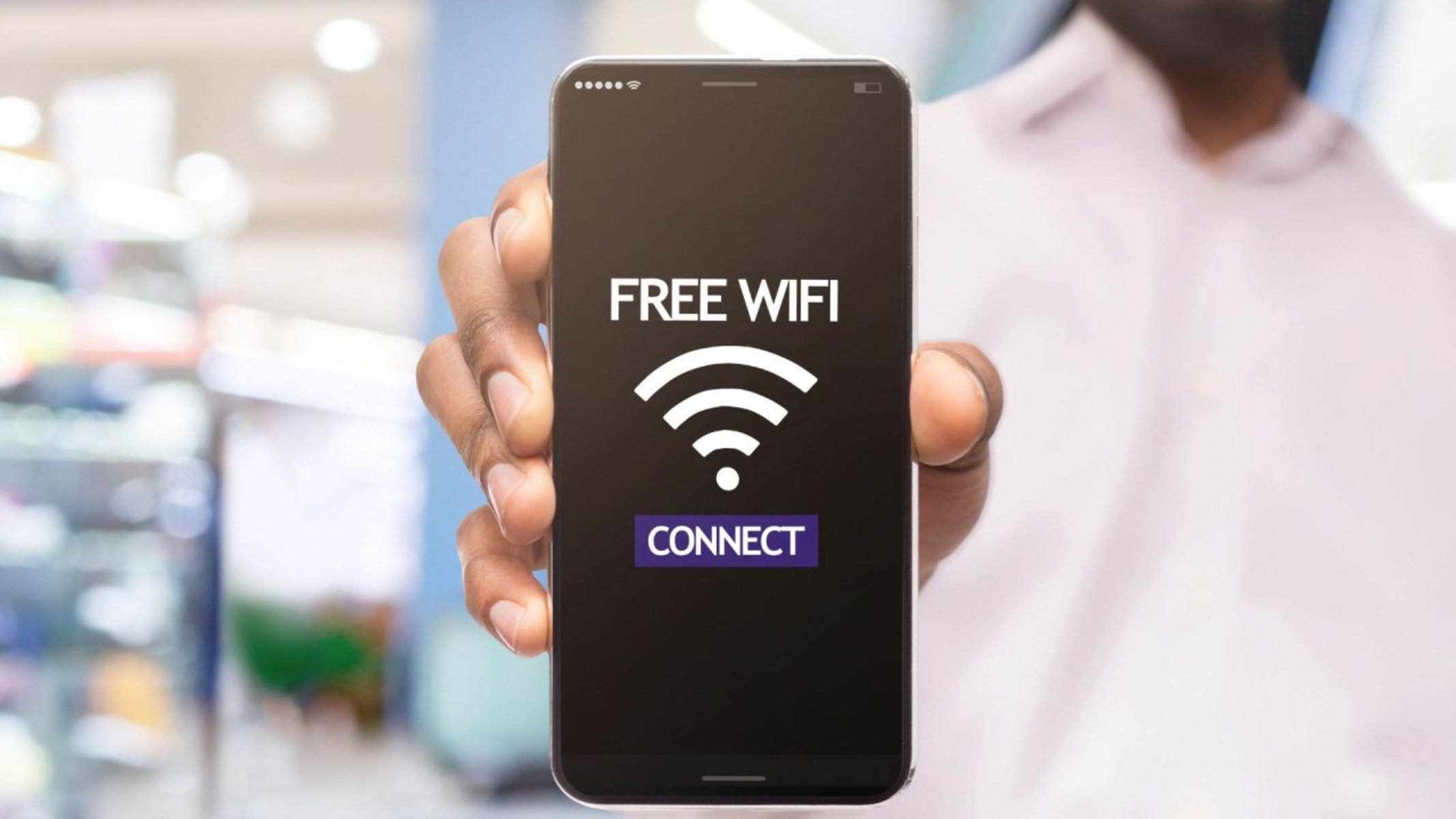Introduction
In today's fast-paced digital age, staying connected is more important than ever. Whether you're working remotely, streaming your favorite shows, or keeping in touch with loved ones, having a reliable internet connection is a necessity. While traditional wired internet connections are prevalent in urban areas, many individuals and businesses in rural or remote locations face challenges in accessing high-speed internet.
In such scenarios, satellite internet and mobile hotspots emerge as viable solutions to bridge the connectivity gap. Understanding the differences between these two options is crucial for making an informed decision that aligns with your specific needs and circumstances. From coverage area and speed to cost and reliability, each option offers unique advantages and limitations.
In this comprehensive guide, we will delve into the intricacies of satellite internet and mobile hotspots, providing valuable insights to help you navigate the complexities of choosing the right internet solution. By examining the key factors that differentiate these technologies, you'll gain a deeper understanding of their capabilities and determine the most suitable option for your connectivity requirements.
So, whether you're a rural homeowner seeking a dependable internet connection for your family or a business owner aiming to establish a seamless online presence, this exploration of satellite internet and mobile hotspots will equip you with the knowledge needed to make an informed decision. Let's embark on this enlightening journey to unravel the intricacies of these two connectivity options and empower you to select the optimal solution for your internet needs.
Understanding Satellite Internet
Satellite internet, a revolutionary technology, leverages satellites orbiting the Earth to provide internet access to users in areas where traditional terrestrial connections are limited or unavailable. Unlike cable or DSL internet, which relies on physical infrastructure, satellite internet beams data from a network operations center to a satellite in geostationary orbit, which then transmits the signal to a user's dish installed at their location. This innovative approach enables individuals and businesses in remote or rural regions to access high-speed internet without being constrained by the limitations of wired connections.
One of the primary advantages of satellite internet is its widespread availability. It extends connectivity to areas that are beyond the reach of traditional internet service providers, making it a lifeline for residents and businesses in remote locations. This inclusivity empowers individuals to engage in online activities, such as education, telecommuting, and e-commerce, fostering economic growth and community development.
Moreover, satellite internet offers competitive download and upload speeds, enabling users to stream high-definition content, participate in video conferences, and engage in online gaming with minimal latency. While the latency associated with satellite internet is higher than that of terrestrial connections due to the signal's travel distance, advancements in technology have significantly reduced this latency, enhancing the overall user experience.
Furthermore, satellite internet is renowned for its resilience in adverse weather conditions. Unlike terrestrial connections that may be susceptible to outages during storms or natural disasters, satellite internet remains operational, providing uninterrupted access to essential online services when other options may falter.
However, it's important to consider potential limitations of satellite internet, such as data caps and latency. Some satellite internet plans impose data usage limits, which, when exceeded, can result in reduced speeds until the next billing cycle. Additionally, while advancements have mitigated latency concerns, activities that require real-time interaction, such as online gaming or high-frequency trading, may still be impacted by the inherent latency of satellite communication.
In essence, satellite internet stands as a beacon of connectivity for individuals and businesses in underserved areas, offering reliable and high-speed internet access that transcends geographical barriers. Its evolution continues to address existing limitations, making it an increasingly viable option for those seeking a robust internet solution in remote or rural settings.
Understanding Hotspot
A mobile hotspot, also referred to as a portable Wi-Fi hotspot, functions as a compact, on-the-go internet access point that utilizes cellular data to create a wireless network. This versatile device enables users to connect their Wi-Fi-enabled devices, such as laptops, tablets, and smartphones, to the internet by leveraging the cellular network's data capabilities. Essentially, a hotspot serves as a bridge between the user's devices and the cellular network, facilitating seamless internet connectivity in diverse settings.
One of the key advantages of a mobile hotspot is its portability. Its compact form factor and wireless functionality empower users to establish an internet connection wherever cellular coverage is available, offering flexibility and convenience for individuals who require on-demand internet access outside traditional Wi-Fi environments.
Furthermore, mobile hotspots eliminate the need for fixed broadband connections, making them particularly advantageous for travelers, remote workers, and individuals residing in areas with limited wired internet infrastructure. Whether it's staying productive during a business trip, streaming entertainment on a long commute, or facilitating impromptu outdoor gatherings, the mobility and accessibility provided by a hotspot cater to a myriad of connectivity needs.
In addition to its portability, a mobile hotspot offers a cost-effective solution for individuals seeking internet access without committing to long-term contracts or installations. Many cellular providers offer prepaid hotspot plans, allowing users to pay for data as needed without being tied to extensive service agreements. This flexibility aligns with the evolving demands of modern lifestyles, where intermittent or temporary internet access may be required without the constraints of traditional broadband contracts.
However, it's important to consider the limitations of mobile hotspots, particularly in terms of coverage and data allowances. While cellular networks continue to expand their coverage, remote or rural areas may experience limited or inconsistent signal strength, impacting the hotspot's effectiveness in such locations. Additionally, data caps and throttling, common features of many hotspot plans, can restrict the amount of data that can be used before experiencing reduced speeds, necessitating careful consideration of data usage patterns.
In essence, a mobile hotspot embodies adaptability and convenience, offering a portable solution for accessing the internet in diverse settings. Its ability to bridge the connectivity gap in mobile and remote scenarios makes it an invaluable tool for individuals and professionals seeking reliable internet access on the move.
Coverage Area
Satellite internet, with its reliance on satellite communication, boasts expansive coverage that transcends the limitations of terrestrial infrastructure. This widespread reach enables individuals and businesses in remote or underserved areas to access high-speed internet, fostering connectivity in regions where traditional wired connections are impractical or unavailable. By leveraging a network of geostationary satellites, satellite internet providers deliver connectivity to diverse geographical landscapes, including rural communities, remote outposts, and offshore locations.
In contrast, a mobile hotspot's coverage area is contingent on the availability and strength of the underlying cellular network. While cellular coverage continues to expand, particularly in urban and suburban regions, remote or rural areas may experience gaps in coverage, impacting the hotspot's effectiveness in such locales. This disparity in coverage highlights the inherent dependence of mobile hotspots on cellular infrastructure, necessitating a comprehensive assessment of the local cellular network's reach and reliability before opting for this solution.
When evaluating coverage area, it's essential to consider the specific geographical location where internet access is required. Satellite internet emerges as a robust choice for individuals and businesses situated in remote or rural areas, offering a dependable connection that transcends the limitations of terrestrial infrastructure. Conversely, mobile hotspots prove advantageous in urban and suburban settings, where cellular coverage is prevalent, and the need for portable, on-the-go internet access is paramount.
Ultimately, the coverage area serves as a pivotal factor in determining the suitability of satellite internet and mobile hotspots for addressing connectivity needs. By comprehensively assessing the geographical landscape and the availability of infrastructure, individuals and businesses can make an informed decision that aligns with their specific requirements, ensuring seamless and reliable internet access in their respective environments.
Speed and Performance
When evaluating internet connectivity options, speed and performance stand as paramount considerations that directly impact the user experience. In the realm of satellite internet, significant advancements have elevated its speed and performance, positioning it as a competitive alternative to traditional terrestrial connections. With download speeds ranging from 12 to 100 Mbps and upload speeds from 3 to 20 Mbps, satellite internet enables users to engage in bandwidth-intensive activities such as streaming high-definition content, conducting video conferences, and accessing cloud-based applications with remarkable efficiency.
Moreover, the evolution of satellite internet technology has mitigated latency concerns, enhancing the overall user experience. While satellite communication inherently involves signal travel distance, leading to higher latency compared to terrestrial connections, innovations such as Low Earth Orbit (LEO) satellite constellations have substantially reduced latency, enabling real-time interactions and seamless browsing experiences.
In contrast, mobile hotspots leverage cellular data networks to deliver internet connectivity, with speeds influenced by the strength and capacity of the cellular network. In urban and suburban areas with robust cellular coverage, mobile hotspots offer impressive download and upload speeds, enabling users to stay productive and entertained on the go. However, in remote or rural locales where cellular coverage may be limited, the performance of mobile hotspots can be affected, leading to variability in speed and reliability.
It's essential to consider the specific speed and performance requirements dictated by your internet usage patterns and the nature of your activities. For individuals and businesses reliant on high-speed internet for activities such as video streaming, online gaming, and large file transfers, satellite internet presents a compelling solution with consistent and competitive speeds. Conversely, mobile hotspots cater to on-the-go connectivity needs, providing commendable performance in areas with robust cellular infrastructure.
Ultimately, the speed and performance of satellite internet and mobile hotspots are influenced by technological advancements, infrastructure availability, and user requirements. By aligning your connectivity needs with the capabilities of these solutions, you can make an informed decision that ensures optimal speed and performance, enhancing your online experiences and productivity.
Cost and Affordability
Cost and affordability are pivotal considerations when evaluating internet connectivity options, as they directly impact the financial implications of establishing and maintaining a reliable internet connection. Satellite internet, renowned for its widespread availability and capability to transcend geographical barriers, offers competitive pricing plans tailored to diverse user requirements. While the initial setup cost may involve the installation of a satellite dish and modem, satellite internet providers often present cost-effective packages that cater to varying usage patterns and budget constraints. These packages encompass a range of data allowances and speeds, empowering users to select a plan that aligns with their specific connectivity needs while remaining financially viable.
In addition to the initial setup cost, satellite internet plans may encompass monthly subscription fees, equipment rental charges, and potential data usage fees. It's essential for users to assess their internet usage patterns and bandwidth requirements to select a plan that strikes a balance between affordability and optimal connectivity. Moreover, the inclusivity of satellite internet in remote or rural areas, where traditional wired connections may be impractical, positions it as a cost-effective solution for individuals and businesses seeking dependable internet access without being constrained by geographical limitations.
On the other hand, mobile hotspots present a flexible and accessible internet connectivity option, particularly in scenarios that necessitate on-the-go access and portability. These hotspots are often available through cellular providers, offering prepaid plans that enable users to pay for data as needed, without being tied to extensive service contracts. This pay-as-you-go model aligns with the evolving demands of modern lifestyles, catering to intermittent or temporary internet access requirements without imposing long-term financial commitments.
However, it's imperative to consider the cost implications of data allowances and usage patterns associated with mobile hotspot plans. Data caps and potential overage charges can impact the overall affordability of this solution, necessitating a comprehensive evaluation of data usage habits and the corresponding cost implications. While mobile hotspots offer portability and flexibility, users should weigh the cost of data against their connectivity needs to ensure a financially sustainable internet solution.
In essence, cost and affordability play a pivotal role in the decision-making process when selecting between satellite internet and mobile hotspots. By meticulously assessing the initial setup costs, monthly subscription fees, and data usage implications, individuals and businesses can make an informed choice that delivers optimal connectivity without compromising financial prudence.
Reliability and Stability
Reliability and stability are fundamental pillars of an effective internet connectivity solution, influencing the seamless operation of online activities and the overall user experience. In the realm of satellite internet, reliability manifests through its resilience in adverse weather conditions and its consistent performance in remote or rural areas. Unlike terrestrial connections that may be susceptible to outages during storms or natural disasters, satellite internet maintains operational continuity, delivering uninterrupted access to essential online services when other options may falter. This unwavering reliability positions satellite internet as a dependable choice for individuals and businesses situated in regions prone to inclement weather or geographical isolation.
Moreover, the stability of satellite internet is underscored by its consistent performance, offering users a reliable connection that transcends the limitations of traditional terrestrial infrastructure. With competitive download and upload speeds, satellite internet enables seamless engagement in bandwidth-intensive activities, such as video streaming, video conferencing, and cloud-based applications. The evolution of satellite internet technology has also addressed latency concerns, enhancing stability by facilitating real-time interactions and minimizing disruptions during online engagements.
In contrast, the reliability and stability of mobile hotspots are contingent on the availability and strength of the underlying cellular network. In urban and suburban areas with robust cellular coverage, mobile hotspots offer commendable stability, providing users with consistent internet connectivity on the go. However, in remote or rural locales where cellular coverage may be limited, the stability of mobile hotspots can be compromised, leading to variability in performance and reliability. This disparity underscores the dependence of mobile hotspots on the prevailing cellular infrastructure, necessitating a comprehensive assessment of the local cellular network's stability and reliability before opting for this solution.
Ultimately, when evaluating reliability and stability, satellite internet emerges as a robust and stable choice for individuals and businesses seeking unwavering internet connectivity in diverse settings. Its resilience in adverse weather conditions, consistent performance, and widespread availability position it as a reliable and stable solution that transcends geographical barriers. By contrast, while mobile hotspots offer portability and flexibility, the stability and reliability of these devices are contingent on the strength of the cellular network, necessitating careful consideration of local infrastructure when assessing their suitability for addressing connectivity needs.
Installation and Setup
When it comes to the installation and setup of internet connectivity solutions, the processes associated with satellite internet and mobile hotspots present distinct considerations that directly influence the user experience and operational convenience.
Satellite internet installation typically involves the deployment of a satellite dish and a modem at the user's premises. The satellite dish, positioned to have an unobstructed view of the sky, acts as the reception point for the satellite signal, while the modem facilitates the translation of this signal into usable internet connectivity. This installation process, often conducted by professional technicians provided by the satellite internet service provider, ensures optimal positioning and alignment of the satellite dish, maximizing signal reception and connectivity stability. Furthermore, the setup of satellite internet involves configuring the user's network and devices to interface with the satellite modem, enabling seamless access to high-speed internet.
In contrast, mobile hotspot setup revolves around the activation and configuration of the portable Wi-Fi hotspot device. Users typically acquire a mobile hotspot device from their cellular provider and activate it by inserting a compatible SIM card. Once activated, the setup process involves establishing a secure Wi-Fi network and customizing the hotspot settings to align with the user's preferences. This streamlined setup procedure enables users to swiftly deploy the mobile hotspot, creating a wireless internet access point that caters to their connectivity needs in diverse settings.
It's important to note that the installation and setup of satellite internet and mobile hotspots are influenced by geographical considerations and user proficiency. Satellite internet installation, requiring precise positioning of the satellite dish, may necessitate professional assistance to ensure optimal signal reception and connectivity stability. Conversely, mobile hotspot setup, characterized by its portability and user-friendly configuration, empowers individuals to establish an internet access point with minimal technical complexity.
Ultimately, the installation and setup processes of satellite internet and mobile hotspots cater to diverse user requirements, offering distinct approaches to deploying reliable internet connectivity. By considering the intricacies of each solution's installation and setup, individuals and businesses can make an informed decision that aligns with their specific needs, ensuring seamless and efficient internet access in their respective environments.
Conclusion
In the ever-evolving landscape of internet connectivity, the choice between satellite internet and mobile hotspots hinges on a myriad of factors, each bearing significance in addressing diverse connectivity needs. As we navigate the complexities of selecting the optimal internet solution, it becomes evident that both satellite internet and mobile hotspots offer unique advantages and limitations, catering to distinct usage scenarios and geographical landscapes.
Satellite internet emerges as a beacon of connectivity, extending high-speed internet access to remote and rural areas, transcending the limitations of traditional terrestrial infrastructure. Its widespread coverage, competitive speeds, and resilience in adverse weather conditions position it as a dependable solution for individuals and businesses seeking unwavering internet connectivity in geographically isolated settings. With advancements in technology mitigating latency concerns and enhancing performance, satellite internet stands as a compelling choice for fostering economic growth and community development in underserved regions.
On the other hand, mobile hotspots embody adaptability and portability, offering a versatile solution for on-the-go internet access in diverse settings. Their compact form factor and reliance on cellular data networks empower users to establish wireless internet access points, catering to the evolving demands of modern lifestyles. While their coverage and stability are contingent on the strength of the underlying cellular network, mobile hotspots prove invaluable in urban and suburban areas, where cellular coverage is prevalent and the need for portable connectivity is paramount.
As we conclude this exploration of satellite internet and mobile hotspots, it becomes evident that the selection of the right internet solution hinges on a comprehensive assessment of coverage area, speed and performance, cost and affordability, reliability and stability, and installation and setup. By aligning these considerations with specific connectivity requirements and geographical landscapes, individuals and businesses can make informed decisions that ensure seamless and reliable internet access.
Ultimately, the journey of choosing between satellite internet and mobile hotspots empowers individuals and businesses to bridge the connectivity gap, fostering productivity, innovation, and connectivity in diverse settings. Whether it's embracing the inclusivity of satellite internet in remote regions or leveraging the portability of mobile hotspots in urban environments, the pursuit of optimal internet connectivity serves as a catalyst for empowerment and progress in the digital era.

























